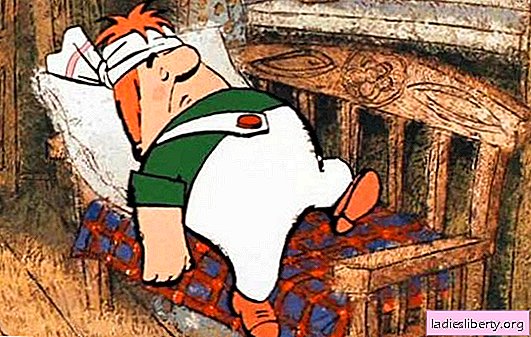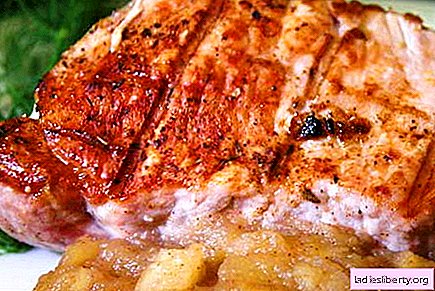
In fact, this dietary technique for weight loss is not related to Japanese cuisine. But the main thing is that it is understandable, simple and effective. And the origin of the name is not so important.
The main thing you need about the Japanese diet for 14 days to lose weight
Observing the classic version of a 2-week diet, it is possible to reduce weight from 5 to 8 kg. The exact mass depends on individual characteristics, in particular - on how overweight was originally.
Plus, another 1 week will be required for the correct entry into the diet and 2-4 weeks to exit it, guaranteeing the preservation of the achieved results for a long period - up to 2 years.
The Japanese diet can be classified as low-calorie (but it is not necessary to consider the energy value of food servings), salt-free and protein, with minimal consumption of fats and carbohydrates.
The principle of effectiveness of 14 days on the Japanese diet for weight loss is based on the specific activation of metabolic processes (in particular, the body spends a lot of energy on the breakdown of proteins), during which fat deposits are burned.
And this happens against the background of a general normalization of metabolism and detoxification of the body.
Plus, due to the predominance of easily digestible proteins in the diet, weight loss does not affect muscle tissue.
But in general, nutritionists insist that you can spend 14 days on the Japanese diet for weight loss no more than once every 6 months and warn of the following negative effects that accompany it:
• the ratio of BJU seems unbalanced and insufficient for the full functioning of the body. If the weight loss program is accompanied by persistent headache, nausea, fatigue, body aches - it should be stopped immediately;
• deficiency of vitamins and minerals leads to deterioration of the skin, hair and nails (the solution may be to take appropriate complex additives);
• meager breakfasts do not allow you to feel particularly cheerful in the morning and often reduce mental performance and physical endurance all day (but some in this case help coffee and fresh fruit);
• in this connection, it is recommended to slightly forget about sports and limit yourself only to morning exercises and walking;
• despite the fact that the menu as a whole can be tasty, there is probably a stable feeling of hunger - after all, only 3 meals are relied on per day.
It is also necessary to know about cases when 14 days on the Japanese diet for weight loss are strictly contraindicated:
• pregnancy and lactation;
• stomach ulcer or duodenal ulcer;
• problems in the cardiovascular system and especially hypertension;
• diabetes mellitus type I and II;
• gout;
• hormonal disorders requiring medication;
• ongoing colds, flu, and the like;
• urolithiasis and cholelithiasis;
• chronic liver disease.
Golden rules for 14 days of the Japanese diet for weight loss
7 days before the start of the Japanese diet, you should discard the most harmful foods (cakes, sweets, all fried, smoked), drink more liquid, begin to reduce the amount of servings and the frequency of meals, in particular - refuse dinner later than 2 hours before sleep (the same rule will remain on the diet).
Snacks, as already mentioned, are strictly prohibited, but you can drink all day long - 1.5-2 liters per day, preferring clean water without gas at room temperature, hot or cold green tea (always high-quality and brewed, not from bags!) , sometimes black coffee.
Drinking, firstly, helps to slightly reduce the feeling of hunger, and secondly, it is necessary to cleanse the body. And it is optimal to start morning with it - a glass of water on an empty stomach, in addition, will help to wake up, and if it is with lemon juice - it will invigorate.
One of the main secrets of the 14 days action on the Japanese diet for weight loss is its severity. You can not miss a meal, greatly shift it in time.
Do not reduce the set of products - the diet should be varied.
The correct way out of the diet involves observing the following rules:
• drinking in a still significant amount;
• the first week of protein food is eaten in the same way, and fats and carbohydrates are only gradually added, from the second - you can return to their usual ratio;
• and it is especially important to accustom the body to full dinners, approximately to such as usual;
• over 10 days, preference is given to complex carbohydrates, mainly to cereals on the water (rice, oatmeal, buckwheat);
• For the first week of flour products, you can add only white bread, then a little bit of pasta, pastries, biscuits and the like;
• from the beginning of the exit program, salt and sugar are gradually returned to the diet;
• 2-4 snacks per day are allowed from not particularly sweet fruits, sour-milk nonfat products, cereals (breakfast cereals) and nuts.
What you can and cannot eat in the Japanese diet for 14 days for weight loss
Salt, sugar and all its substitutes in this weight loss program are completely excluded.
All food should be boiled (and preferably steamed), stewed or baked. But sometimes - you can cook something in vegetable oil, preferably olive oil (although it is optimal to use it in salads).
The main sources of protein are:
• poultry meat (without skins and fat);
• eggs;
• veal;
• low-fat sea fish (with white meat).
The advantage of this diet is that it is also available to vegetarians - all meat can be replaced by such sources of protein as soy products (it is especially recommended to lean on tofu cheese), lentils and beans.
From dairy, it is better to limit yourself to 1% kefir.
But plant products are very diverse:
• eggplant;
• kiwi;
• carrot;
• mango;
• tomatoes;
• cucumbers;
• beets;
• greenery;
• pumpkin;
• cauliflower, white cabbage and Beijing cabbage;
• pears;
• celery;
• lemon, grapefruit and orange;
• apples;
• zucchini.
Sweet fruits and dried fruits (including grapes, strawberries, pomegranates, bananas, cherries and persimmons), as well as potatoes, are strictly prohibited.
Little by little, and in the morning, rye and whole grain bread is allowed, the main thing is not today's baking, ideally, toast (without butter!) Or crackers.
You can also eat diet biscuits.
A strict ban is imposed on the following categories of food:
• meat semi-finished products from the store;
• sausages;
• packaged juices;
• cheese;
• dough products;
• ice cream;
• cottage cheese;
• milk;
• yogurt;
• chocolate (even bitter);
• pasta;
• popped rice (and popcorn);
• ready-made sauces;
• semolina, corn, millet.
Sample menu for 14 days of losing weight on the Japanese diet
Day 1
Breakfast - boiled eggs, carrot, cabbage and apple salad with lemon juice and vegetable oil, kefir, orange.
Lunch - steamed chicken breast with a side dish of baked apple, beetroot, pumpkin and zucchini.
Dinner - fresh fruits, kefir.
Day 2
Breakfast - coffee, toast.
Lunch - vegetable stew with fish (everything is cooked in olive oil), fresh fruits.
Dinner - veal broth with chopped boiled egg, grated carrots with apple and lemon juice.
Day 3
Breakfast - coffee, scrambled eggs stuffed with vegetables and tofu, biscuits.
Lunch - mashed zucchini soup with beef, fresh vegetable salad.
Dinner - fruit salad, kefir.
Day 4
Breakfast - cucumber salad with tomatoes and herbs with vegetable oil, kefir.
Lunch - chicken and lentil soup, warm salad of tofu and “rice” from cauliflower, toast.
Dinner - stewed turkey with carrots and green peas (in olive oil), scrambled eggs in the oven with baked pears.
Day 5
Breakfast - coffee, poached eggs, toast, grapefruit.
Lunch - steamed chicken dumplings, cabbage salad with lemon juice and vegetable oil.
Dinner - fish baked with Provencal herbs, vegetable casserole.
Day 6
Breakfast - coffee, fruit salad.
Lunch - vegetable puree soup, baked with chicken and omelette pumpkin.
Dinner - baked fish, baked tomatoes with tofu and herbs.
Day 7
Breakfast - salad of orange, mango and kiwi, kefir.
Dinner - veal baked with pumpkin and white roots.
Dinner - cucumber salad and tomato with lemon juice and vegetable oil, kefir.
Day 8
Breakfast - coffee, Orsini eggs, toast.
Lunch - boiled chicken, "rice" from cauliflower, baked tomatoes with herbs.
Dinner - vegetable casserole, a dessert of raw eggs, beaten with kefir and baked apples.
Day 9
Breakfast - coffee, biscuits.
Lunch - pumpkin soup, a salad of Beijing cabbage, chicken and baked pears, apple juice and carrots.
Dinner - salad of fruits and egg pancakes, kefir.
Day 10
Breakfast - boiled eggs, kefir, cabbage salad with tomatoes and vegetable oil.
Lunch - boiled chicken stewed in olive oil squash with carrots.
Dinner - a puff casserole of zucchini, pumpkin, carrots, apples and tofu, toast.
Day 11
Breakfast - coffee, steamed omelet, biscuits, tofu.
Lunch - steamed fish with a side dish of protein omelet with vegetables.
Dinner - cabbage salad with zucchini stewed in olive oil.
Day 12
Breakfast - boiled eggs, grapefruit, kefir, toast.
Lunch - veal soup with cabbage, apple and kiwi salad, tomato juice.
Dinner - eggplant baked with tofu, baked apples with a pinch of cinnamon.
Day 13
Breakfast - coffee, toast.
Lunch - chicken broth with boiled egg and crackers, a salad of Beijing cabbage, baked fish and beets with orange juice and vegetable oil.
Dinner - fresh fruits, a dessert of baked pumpkin, whipped with kefir and raw eggs.
Day 14
Breakfast - coffee, boiled eggs, cucumber, cabbage and greens salad with lime juice and vegetable oil.
Lunch - steamed veal cutlets, mashed baked pumpkin and apple with fresh herbs, tofu.
Dinner - salad of tomato and greens with vegetable oil, toast.











